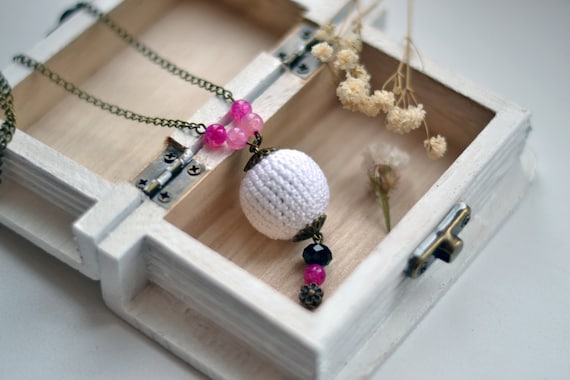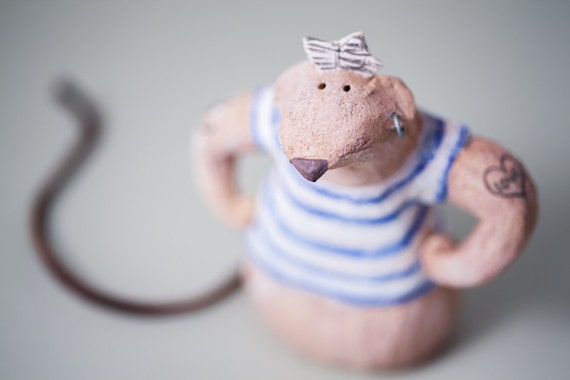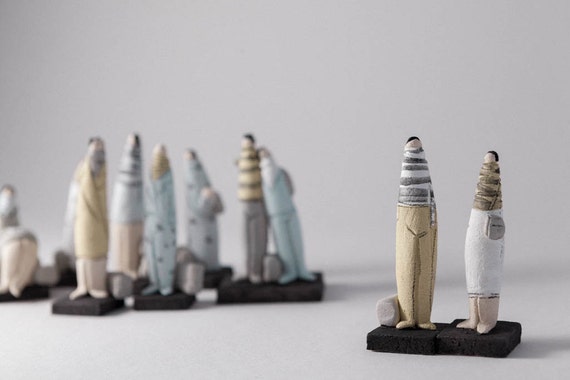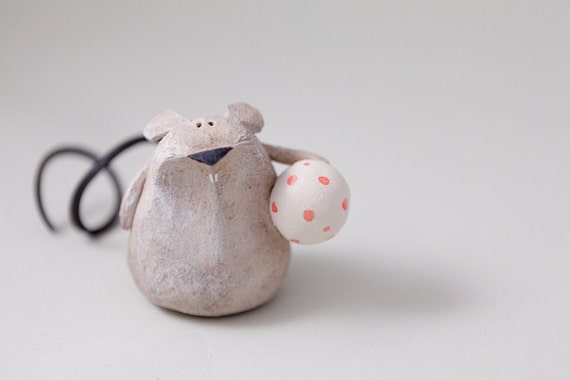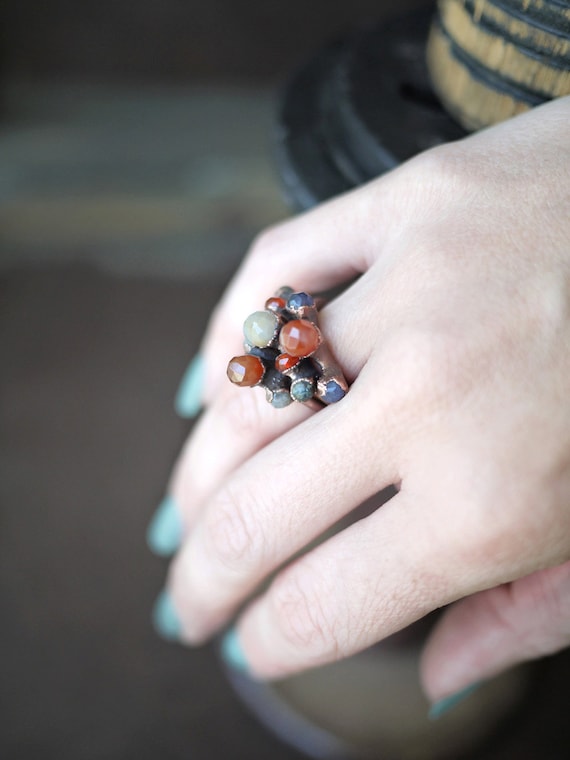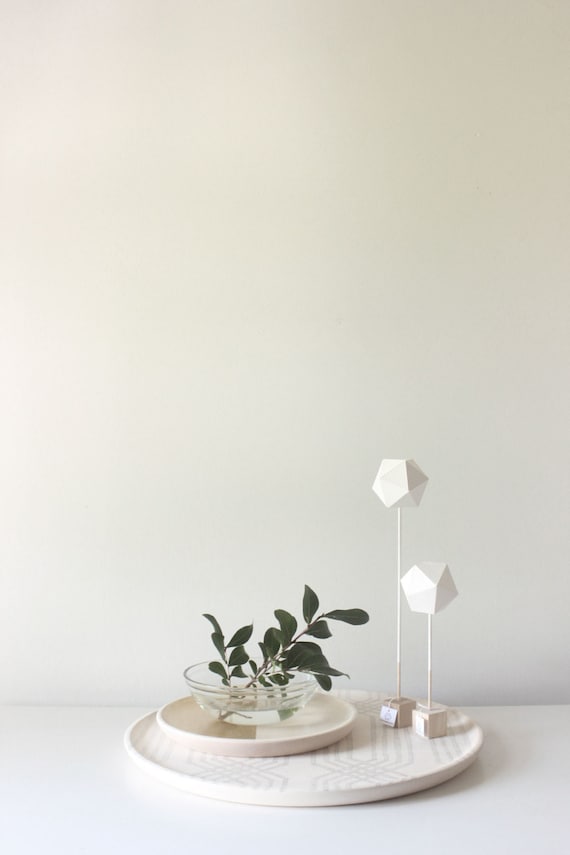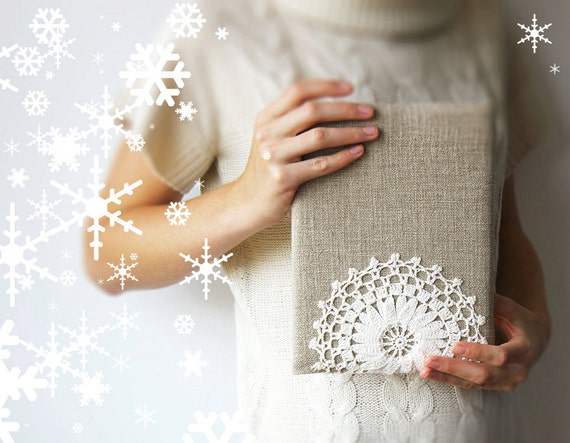
 Materials and Supplies Needed:
Materials and Supplies Needed:
- 8" cone template (left + right), 6" cone template, 4" cone template
- 4 pieces of heavyweight cardstock
- parchment paper
- 2 - 12" lengths of 1/8" dowel
- small blade
- aspic cutter in star shape
- rolling pin
- air dry porcelain or modeling clay
- 4 LED tea lights
- (not pictured) wet rag or paper towel or tiny sponge
- (not pictured) glue or tape

 Step One:
Step One: I
whipped up a set of cone templates for you to print onto cardstock and
glue together to use as guidelines for rolling out your clay and as
scaffolding for forming your holiday trees. The large 8" and medium 6"
cone templates need to be cut out and glued together, while the two
smaller 4" cone templates are already in one piece. These templates
should be printed onto 8.5x11" cardstock and should
not be
resized to avoid cropping during printing. After you have the flat cone
template cut out, wait to glue or tape it into a cone shape until after
step three.
Step Two: Place your parchment paper overtop of the
flat cone template and roll out the clay on top of the paper to 1/8"
thickness. The dowels will rest under the rolling pin to keep you from
rolling out the clay too thinly. Do not use wax paper for this, because
it will stick to the clay. Aluminum foil also isn't the best choice
because it will tint your clay with a grey color. But if foil is all you
have, you can always use the tinted side for the inside of your cones,
and no one will be the wiser!
 Step Three:
Step Three: After
rolling out enough clay to cover the template, remove the template from
behind the paper and place it on top of the clay. Trim around it with a
blade and put the excess clay away or wrap it in a wet paper towel, so
it doesn't dry out. Now you can finish assembling your cone template so
it will be ready to be used as scaffolding for forming your tree in step
five.
Step Four: Using a blade, score the edge of the clay
on the side that you want to be on the inside of the cone. Use cross
hatching for this technique. Then lay the paper cone onto this edge and
wrap the clay around the paper cone. If there isn't enough clay to wrap
around the cone, lay it back onto the paper and roll out only the edges
to give you a bit of an overlap when it's wrapped around the paper cone.
Step Five: After the clay has been wrapped around
the paper cone, cross hatch on the other edge of the clay (facing the
outside, not the inside this time) and wet both cross hatched areas with
a wet paper towel or small sponge. The cross hatched edge from step
four should lay on top of the newly cross hatched edge. This "score and
slip" technique will bind together the seam so that it doesn't break
apart when the clay has dried. Hold the cone from the inside while from
the outside you smooth together the seam with a wet paper towel.
Step Six: Holding the cone from the inside, press
your finger against the area you want to pierce with the little star
shaped aspic cutter. (Aspic is basically just a fancy name for savory
jelly.) You'll need to really press the cutter against the paper cone
where your finger is pushing against from the inside, and give it a
little wiggle too. When you pull out the cutter, the clay should come
out with it. If you mess up one hole, you can always spruce it up with a
blade. And if you really butcher the piercing process, you can always
just take the clay off the cone, ball it up, and begin all over again!


After
all of the holes have been cut into the clay, let your cones sit on the
cardstock scaffolding for 6 hours. Then, gently remove the cardstock
and let the clay dry out for another 24 hours before handing. You can
paint or glaze your trees if you want a more colorful scene, but I love
how the little LED tea lights glow inside of the white trees! This would
be a great way to decorate a mantle, or you could make some extra trees
and create a magical winter tablescape for your holiday parties.
Happy Holidays! -
Mandi Johnson
Credits // Author and Photography: Mandi Johnson




